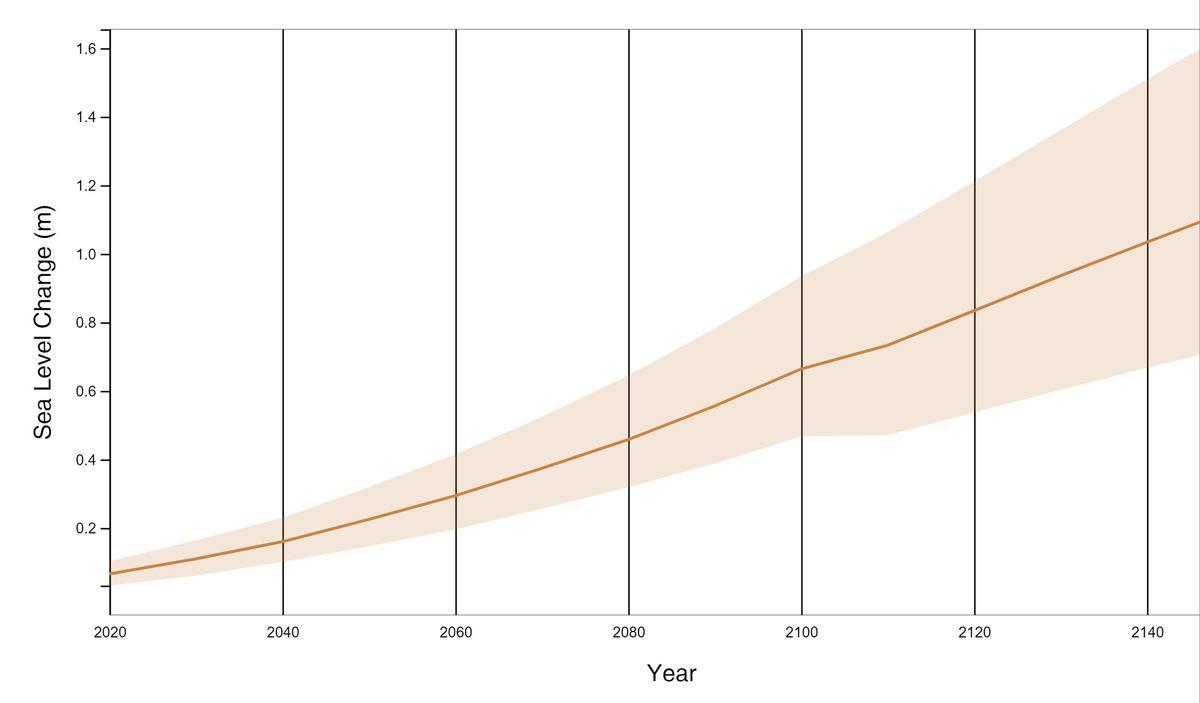Global mean sea level increased approximately 0.76 centimeters from 2022 to 2023, an unfortunately historic jump due mainly to climate warming and the development of a strong El Niño phenomenon, according to data recently presented by NASA.
The catastrophic impact that this rise in sea level may have on the ecosystem is incalculable, and also on the very geography of the Balearic Islands. And it won’t be long now, as those who were born in these years will experience it. The NASA forecast is that in 2100 the sea level in the Balearic Islands will have risen by almost half a meter (0.49 centimeters). This figure is established within a ‘normal’ scenario, but if more catastrophic (but not improbable) forecasts are used, in the year 2100 the sea level in the archipelago could rise more than one meter, according to NASA estimates.
As a practical example so that this problem can be visualized in a simple way, is that at the end of the century the beaches of Ibiza, for example, will recede a minimum of 50 metersaccording to scientific forecasts. We will run out of beaches, but what is really at risk is the survival of human beings.
A dark picture
This NASA-led analysis is based on a sea level data set that includes more than 30 years of satellite observationsstarting with the French-US TOPEX/Poseidon mission, launched in 1992. The Sentinel-6 Michael Freilich mission, launched in November 2020, is the latest in a series of satellites that have contributed to this sea level record.
The data show that the global mean sea level has risen a total of approximately 9.4 centimeters since 1993. The rate of this rise has also accelerated, more than doubling from 0.18 centimeters per year in 1993 to the current rate of 0.42 centimeters per year.

NASA’s probable and non-catastrophist scenario of sea level rise in the Balearic Islands / Nasa
NASA experts point to the current climate change as the main culprit. Excessive heat trapped in the atmosphere by greenhouse gases is not only warming the Earth, but is also causing massive sea level rise. A vicious circle from which there seems to be no escape.
Sea level rise is not random. It is a direct response to the warming of our planet and acts almost like a giant thermometer. It tells us exactly how much additional heat is trapped in the Earth’s climate system by greenhouse gases. There are two main ways in which climate change drives this increase:
Melting ice
As glaciers and ice sheets melt due to rising temperatures, water reaches the ocean, increasing the overall volume. Think of ice cubes melting in your glass: the water level rises as the ice disappears.
Expanding water
Warmer water takes up more space than cooler water, a phenomenon known as thermal expansion. This is similar to how liquids in a thermometer expand when it is hot.
Role of climate change
It is important to note that while weather patterns play a role in annual sea level variation, the long-term trend is entirely unmistakable: sea levels are rising due to human-induced climate change.
“Long-term data sets like this 30-year satellite record allow us to differentiate between short-term effects on sea level, such as El Niño, and trends that let us know where sea level is headed,” said Ben Hamlington, who leads NASA’s sea study.

